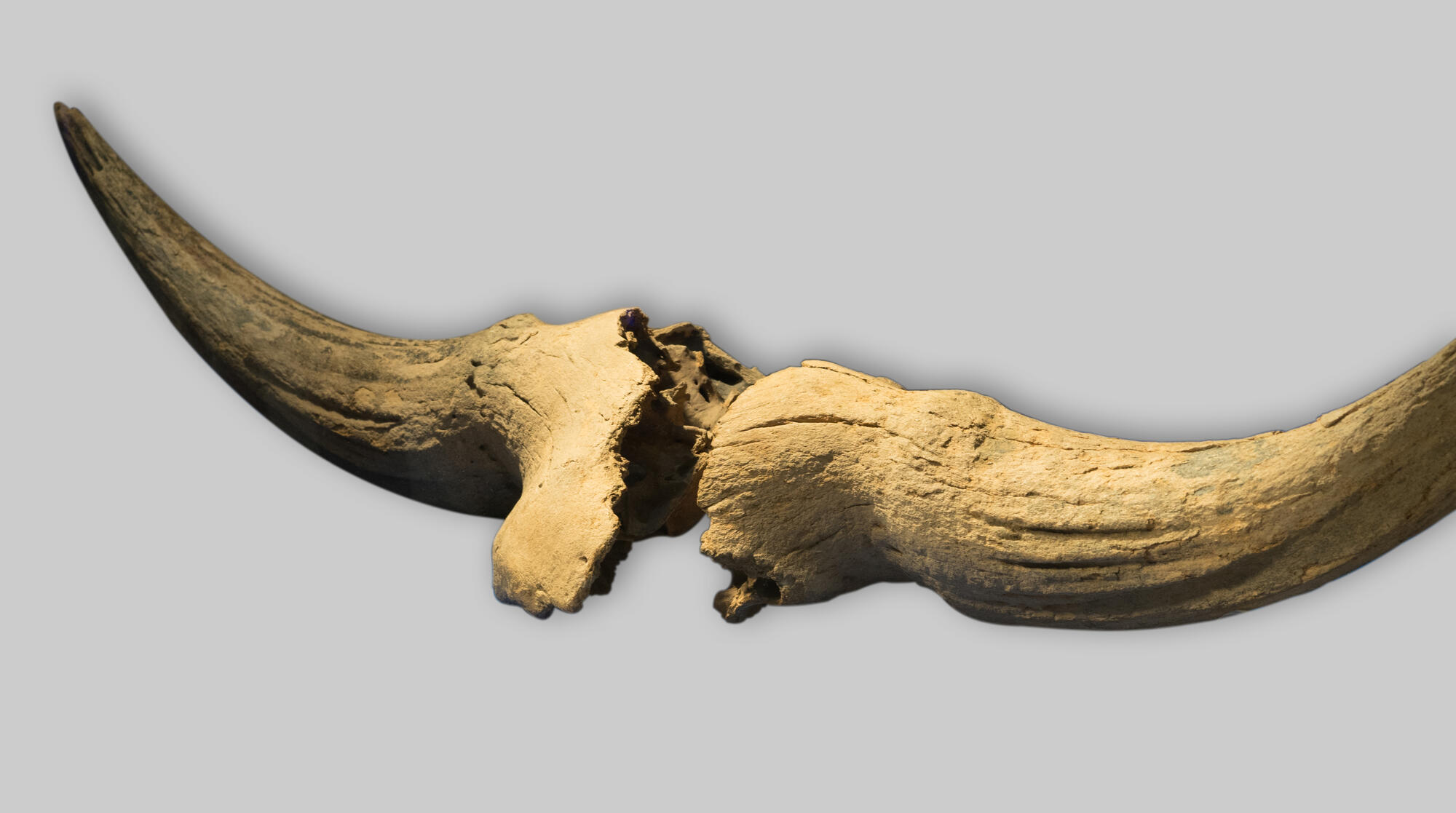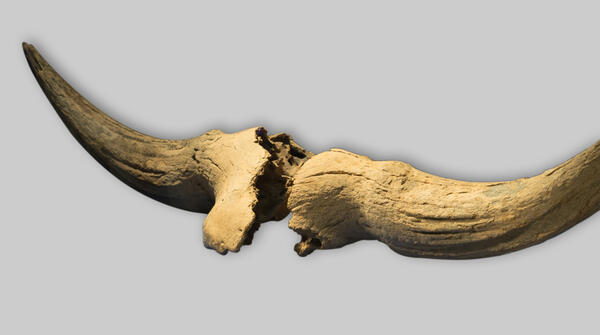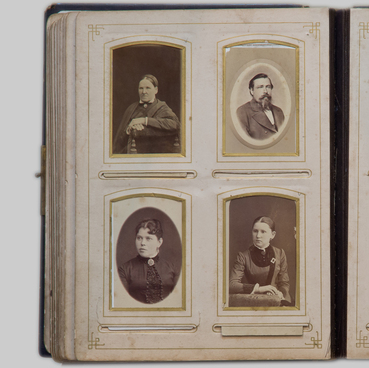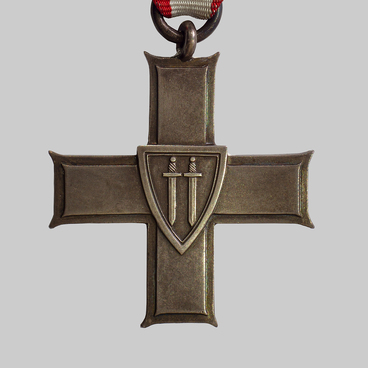The primitive bison (from the French bison, ‘steppe bull’), or bison (from the ancient Russian bison) is an ancient steppe bull, covered with thick wool, a typical inhabitant of the cold steppes of the Ice Age. They were very large animals - some individuals weighed over two tons, and the distance between the ends of their horns reached two meters.
Primitive bison belonged to the bovine family, representatives of which still exist today. An important distinction of the family is the horns - these are bony structures firmly joined to the skull, almost always only one pair. Unlike deer and pronghorns, bovine horns are never branched.
The primitive bison horns diverged to the sides, slightly curving upward. The bisons the massive skull had a noticeably prominent nape. They ate grassy vegetation, extracting it from under the snow in winter.
The history of bisons is known from the late Pliocene, about one and a half million years to the present day. In the sediments of ancient rivers in the southern part of Europe, bone remains of small bison, weighing up to half a ton, with short horns are found. Primitive bison rapidly increased in number and size, and in the early Pleistocene, 600-400 thousand years ago, their weight reached a ton or more. The skeletons of such bison were found in the area of the Dniester River.
During the same period, bison penetrated from Asia to America through Beringia - the region that connected northeast Asia and northwestern North America in the form of a land isthmus - and after that their populations developed in parallel on both continents.
In the heyday of their existence, the ancient bison were one of the largest bovids, only Tibetan yaks and primitive tours could compare with them. There was not a single predator in that era that could defeat an adult bison alone.
In the Volga valley, during the construction of the KUibyshev Dam and the VolgogrAd State District Power Plant, bison skulls with a forehead width of 35 centimeters and a spread of horn rods of 180 centimeters were removed. Four people would sit loosely in a row between the ends of their horns. Also, the remains of the skeleton of primitive bison were found in the KAma region.
In the frozen soils of northern Siberia and Alaska, bison skulls with preserved horn shells, that is, the outer part of the horns, are still found. In 1971, a frozen corpse of a young bison female with preserved skin, wool and even intestinal contents was found on the cliff of the IndigIrka River near SutorOkha village in YakUtia.
At the end of the Pleistocene, the steppe bison decreased in size and began to adapt to permanent habitation in the forest under the conditions of the expanding taiga zone. Thus, in Eurasia, two separate populations of forest bisons were formed: the BelovEzhsk one for plain forest and the Caucasian one for mountain forest.
Due to the rapid warming, the steppe bison began to die out in Eurasia, gradually being replaced by woolly mammoths. In the Kama region, steppe bison completely disappeared about 10 thousand years ago. Today their modern relatives are American buffalo and European bison.
Primitive bison belonged to the bovine family, representatives of which still exist today. An important distinction of the family is the horns - these are bony structures firmly joined to the skull, almost always only one pair. Unlike deer and pronghorns, bovine horns are never branched.
The primitive bison horns diverged to the sides, slightly curving upward. The bisons the massive skull had a noticeably prominent nape. They ate grassy vegetation, extracting it from under the snow in winter.
The history of bisons is known from the late Pliocene, about one and a half million years to the present day. In the sediments of ancient rivers in the southern part of Europe, bone remains of small bison, weighing up to half a ton, with short horns are found. Primitive bison rapidly increased in number and size, and in the early Pleistocene, 600-400 thousand years ago, their weight reached a ton or more. The skeletons of such bison were found in the area of the Dniester River.
During the same period, bison penetrated from Asia to America through Beringia - the region that connected northeast Asia and northwestern North America in the form of a land isthmus - and after that their populations developed in parallel on both continents.
In the heyday of their existence, the ancient bison were one of the largest bovids, only Tibetan yaks and primitive tours could compare with them. There was not a single predator in that era that could defeat an adult bison alone.
In the Volga valley, during the construction of the KUibyshev Dam and the VolgogrAd State District Power Plant, bison skulls with a forehead width of 35 centimeters and a spread of horn rods of 180 centimeters were removed. Four people would sit loosely in a row between the ends of their horns. Also, the remains of the skeleton of primitive bison were found in the KAma region.
In the frozen soils of northern Siberia and Alaska, bison skulls with preserved horn shells, that is, the outer part of the horns, are still found. In 1971, a frozen corpse of a young bison female with preserved skin, wool and even intestinal contents was found on the cliff of the IndigIrka River near SutorOkha village in YakUtia.
At the end of the Pleistocene, the steppe bison decreased in size and began to adapt to permanent habitation in the forest under the conditions of the expanding taiga zone. Thus, in Eurasia, two separate populations of forest bisons were formed: the BelovEzhsk one for plain forest and the Caucasian one for mountain forest.
Due to the rapid warming, the steppe bison began to die out in Eurasia, gradually being replaced by woolly mammoths. In the Kama region, steppe bison completely disappeared about 10 thousand years ago. Today their modern relatives are American buffalo and European bison.



